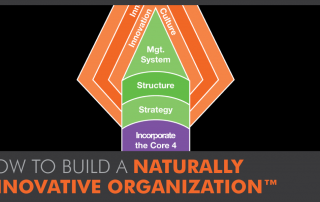Alignment Foundation: Building a Naturally Innovative Organization™ Part 2
The Alignment Foundation: The Core 4 The Alignment Foundation is about the Core 4: Purpose Values Mission Vision Nothing earth-shattering here. Many of us have heard that we need to have these four pieces in place. But what I'd like you to consider is whether they are REALLY part of your who your organization is, deep to the core. If an employee was acting outside of the core purpose or values of the company, would every other person in the company step in and provide some correction? It starts with the senior leadership team. Each person on the senior leadership team must exemplify each of the core values of the company. They must know the purpose of the company and be able to tell what that looks like when realized. They need to be able to quote the values and mission (both short), and do so with real conviction. And sharing the vision needs to be second nature, with stories of what you are creating and what it will look like in the future. Your Purpose Organizations exist for a purpose. Many would consider that purpose is to make money or create an impact. But purpose goes deeper. Purpose to a faith-based leader may be to glorify God. Purpose to a non-profit leader may be to save millions of lives. And the purpose of a for-profit leader may be to have both a profit and impact. Your Purpose is your WHY. Your Purpose never changes. Big Think's Purpose: To Create offerings and events that transform businesses. Your Values Core Values are those things that you will get into arguments over, and fire people when they don't line up with them. They are your immovable rocks [...]





